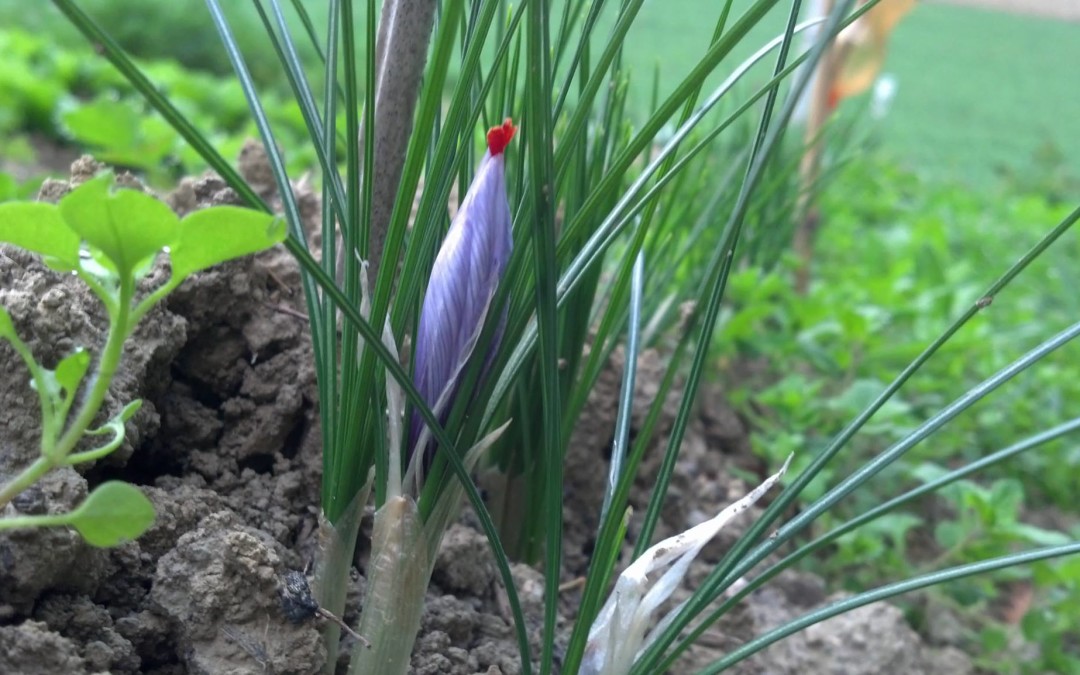Passion, research, commitment, respect for nature and tradition as a cultural value. These are the key factors that make a product so valuable and these are the guiding values of Vincenzo Lucidi, owner of “Zafferano dei Colli Piceni” (lit., Saffron of Piceno Hills). In this interview, he bares all about his life choice.
Saffron is a spice derived from an enchanting, yet not well-known, flower. But what is the most suitable environment for growing saffron?
Saffron plant has a good ability to adapt: it proliferates in a Mediterranean-like climate, but also adapts well to continental climate with cold winters and hot, dry summers like in Iran, where about 95% of the worldwide commercial production is carried out. In our area, the plant favors well-drained, clay loam soils with southern exposure in high or average-high hills.
Can we consider saffron as a local product? When was it first cultivated around here?
Especially over the last years, several companies in the Piceno area have started growing this precious spice.
I don’t know whether it could be considered a local product – well, saffron definitely has its own history in our area – but, as far as I know, many companies are actually cultivating corms, that is saffron bulbs bought elsewhere – often in Navelli (an area near the city of L’Aquila awarded with the PDO label) – and grown here.
There is one singular fact, a source of pride for me: my corms have indeed been grown here since many generations.
How was this passion for saffron born? And how has it changed your life?
My encounter with saffron was by chance and, I have to say, particularly lucky. In the mid-‘70s of last century, my grandparents moved out to an uncle’s and left some plants and flowers in the garden. Among them was a tiny, beautiful flower that strangely would bloom shortly before winter.
I was just a child, but over the years my passion for nature and plants has led me to pull these flowers out and replant in different places several times. Later on, after university, I discovered it was saffron. Then I found out, thanks to my mum, that my Granma used to grow it to extract its pistils (stigmas), which are used to obtain the vegetable curdling of sheep’s milk as well as to produce the traditional homemade cheese.
Until my grandparents’ generation, owning a small number of sheep was absolutely common in our area, especially in the country. This would allow families to provide for their daily sustenance, that is meat, milk, wool and cheese. Generally, this flock of sheep was so small that, in order to obtain milk curdling, not only did people use veal rennet -it was too precious!- but also a vegetable curdle. And saffron was a staunch ally at that stage.
Further studies allowed me to discover that this technique was already popular among the Romans, who had probably learnt it from Etruscans. Therefore, this custom was presumably handed down from generation to generation until two or three generations ago.
Unfortunately, the disappearance of these small, family-run flocks brought to the disappearance of saffron cultivation, which had this specific and exclusive purpose.
An old aunt used to tell me that as children they were told saffron “could not be eaten because it was poisonous!”. This bizarre idea definitely facilitated generational handover of sheep’s milk vegetable curdling.
Could we then say that saffron is a local product?
Well, yes! In this regard, I’ve been in contact with ASSAM (Food and Agriculture Agency of Marche Region) and CRA (Horticulture Research Unit) of Monsampolo del Tronto for a couple of years in order to have “my saffron” recognized as one of the protected ecotypes of the Region Marche. Of course, we’re talking about this specific saffron, its history and origins and not about other varieties, such as those from Navelli (L’Aquila), Cascia (Perugia), Spoleto, Tuscany or Sardinia, a land of PDO saffron!
Don’t miss the chance to live a Saffron Experience: book your experience now!


Recent Comments